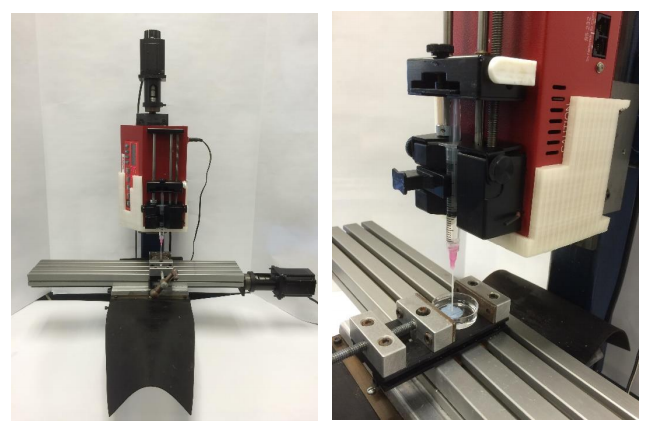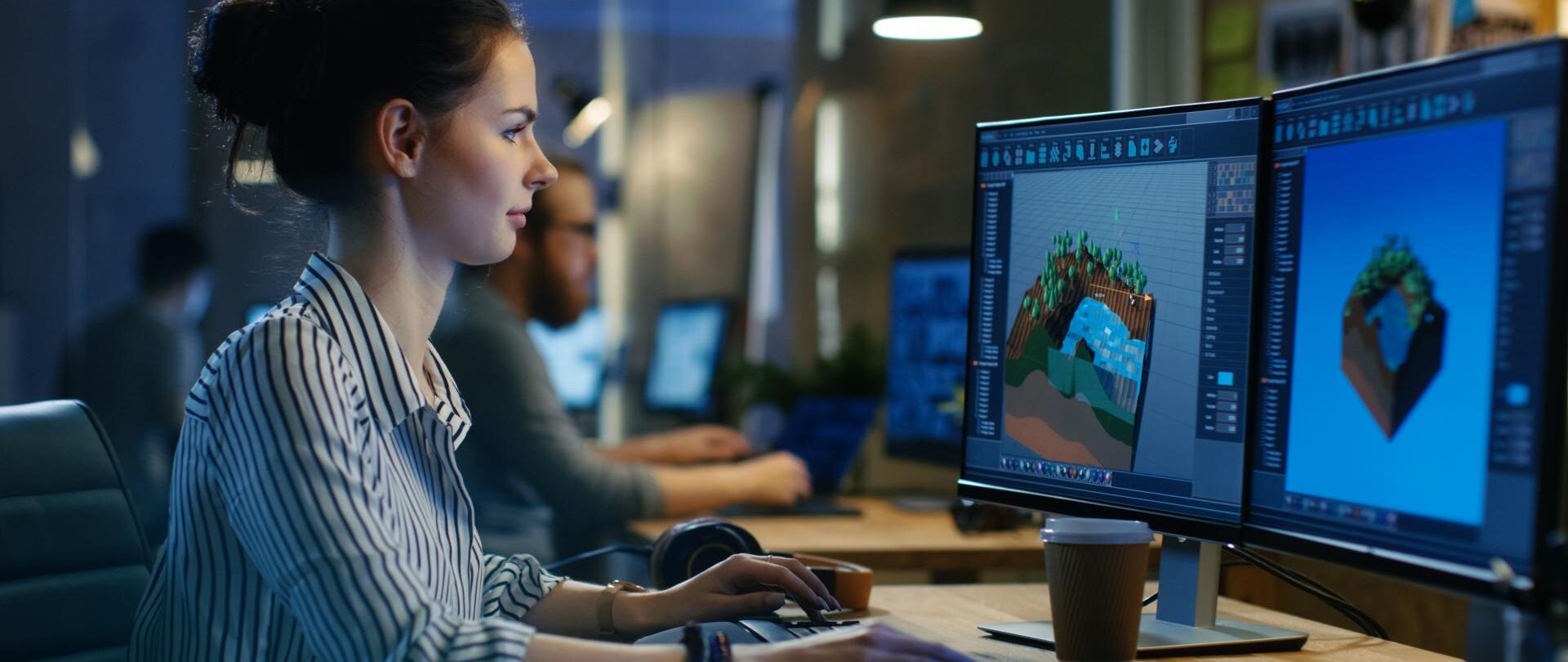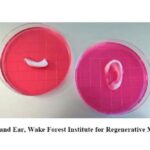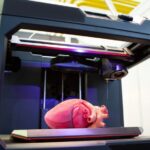

University of Missouri thesis student, Christopher John Glover, explores the use of 3D printed structures in bioprinting, outlining his findings further in ‘In Situ Polymerizing Collagen for the Development of 3D Printed Tissue Engineering Scaffolds.’ Extolling the virtues of collagen while also discussing challenges in using it, Glover explains that this natural material has been a favorite in tissue engineering, demonstrating excellent protein structures for ventures in the lab.
“Nearly all tissues in the human body contain collagen including skin, muscle, nerves, vasculature, tendons, ligaments, and even bone. Skin, for example, is 80% collagen by mass. Due to this abundance, collagen is extremely biocompatible and versatile,” states Glover. “With the proper mechanical and chemical stimuli, stem cells seeded on collagen scaffolds have the potential to differentiate down a myriad of cell lineages and become nearly any tissue in the human body.”
There can be difficulty in using collagen for some types of tissue regeneration though, and other disadvantages such as the amount of time it takes to progress from a gelatinous state to a solid.
For this project, Glover studied the manufacturing of 3D collagen-based scaffolds which he enhanced with a variety of anti-inflammatory agents such as gold nanoparticles and curcumin. Specifically, he used in situ polymerizing collagen (IPC), a unique material derived from Type 1 porcine collagen. In experimenting, he performed different post printing treatments on the test groups. Some were just left in their basic 3D printed state, which others were crosslinked without AuNP or curcumin or with either 1X or 2X AuNP or curcumin. Characterization was performed in evaluating stability of each scaffold and then noting its viability, along with which types of treatment were most successful.
Tasks for ascertaining viability were as follows:
- To 3D print uniform and reproducible collagen-based scaffolds
- To examine the thermal properties of the crosslinked scaffolds
- To verify and quantify the presence of gold nanoparticles in the crosslinked scaffolds
- To evaluate the cytotoxicity and anti-inflammatory capabilities of the gold nanoparticle and curcumin scaffolds
The six experimental groups were:

- Uncrosslinked
- Crosslinked
- AuNP
- Curcumin
- 2X AuNP
- 2X curcumin
“The uncrosslinked group exists to examine the effects of crosslinking alone; the AuNP and curcumin groups exist to determine the effects of each bioactive agent; the 2X AuNP and 2X curcumin groups exist to exacerbate those effects, for better or for worse,” stated Glover.
Glover customized his own 3D printer, assembled from a CNC milling machine, with translational stages manipulated by three stepper motors. Mach3 Mill software was used in design and editing. The two most common 3D prints made during the study were a grid pattern and circles used for cell assays. Glover found that resolution was not optimum with his hardware but thought it could be finer on a higher-performance printer.
Crosslinking with EDC or genipin proved to enhance both stability and durability of the 3D printed scaffolds.
“By comparing the application of EDC crosslinking during printing versus post printing, it was found that crosslinking post printing yielded significantly greater stabilities than crosslinking during printing,” stated the researchers.
The collagen-based scaffolds crosslinked with EDC exhibited ‘superb cell viability,’ although Glover pointed out that gold nanoparticles seemed to decrease success in viability somewhat. Genipin also decreased viability, which plummeted further with the addition of curcumin.
“As previously stated, collagen alone is a fragile material and even after crosslinking can deteriorate if over-handled. If this platform is to be utilized to produce implantable scaffolds, the durability of the collagen would need to be markedly improved. This could be accomplished by printing the IPC along with another material or by further post-print manipulation of the collagen other than simply crosslinking,” concluded Glover, who goes on to state that printer resolution would need to be improved, along with enhancing of the anti-inflammatory capabilities of the printed products.
3D printing with collagen has been of great interest to researchers lately, including uses in artistic masks, bioink, and skin grafts. Read more about collagen in tissue engineering here. What do you think of this news? Let us know your thoughts! Join the discussion of this and other 3D printing topics at 3DPrintBoard.com.
[Source / Images: In Situ Polymerizing Collagen for the Development of 3D Printed Tissue Engineering Scaffolds]
If you're looking for affordable 3D visualization services in the USA, our platform provides an ideal solution for all your architectural and real estate needs. Through our service, you can access high-quality 3D renderings at competitive prices without compromising on quality. Whether you need interior visualizations, exterior renderings, or architectural animations, our team ensures that you get professional results that fit within your budget. With our support, you can make your projects visually stunning while saving on costs, all with a quick and straightforward process.
Through our site, you can easily order affordable 3D visualizations for your projects, whether for a residential property, commercial development, or architectural design. We understand the importance of staying within budget, and that's why we offer tailored solutions to ensure you get the best value for your investment. Our experts work efficiently to provide you with realistic, photorealistic 3D images that will elevate your presentations and attract clients, making your property stand out in the market.






